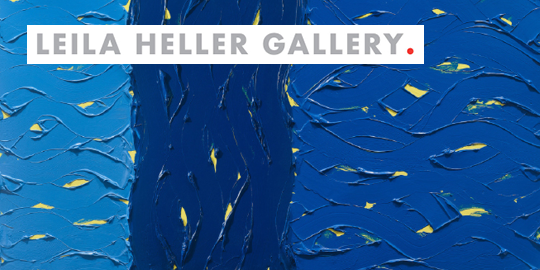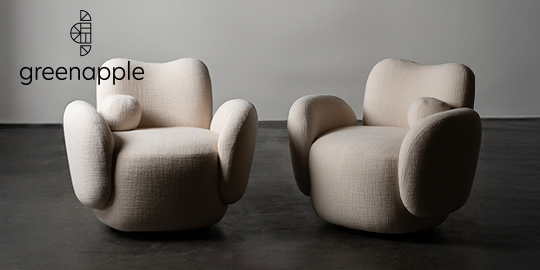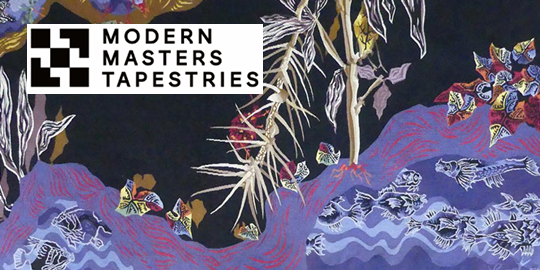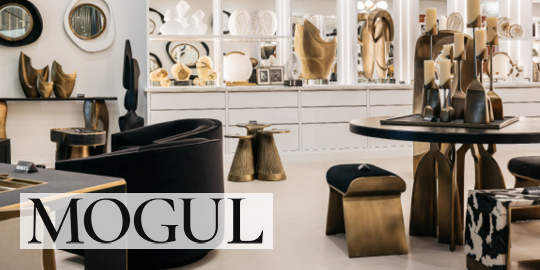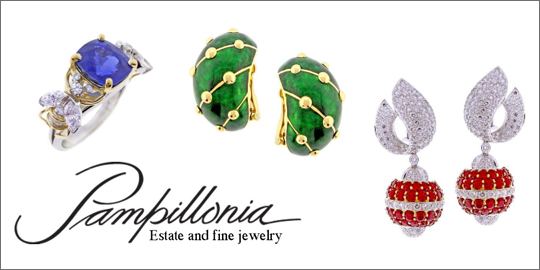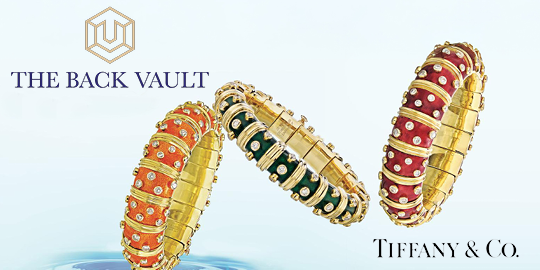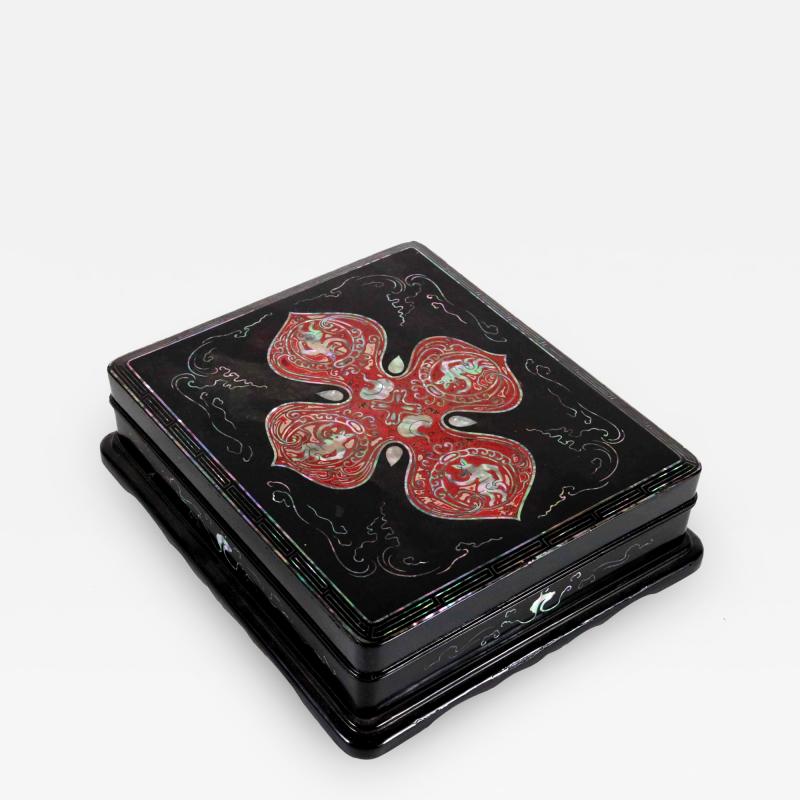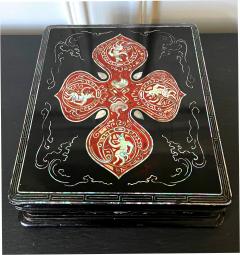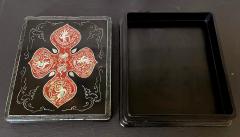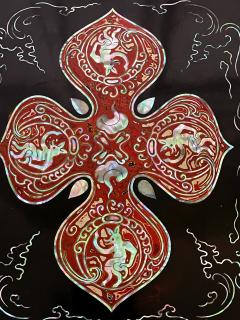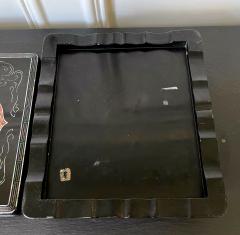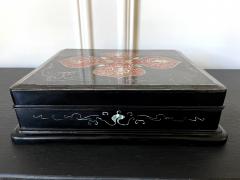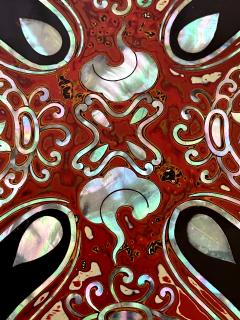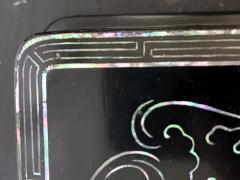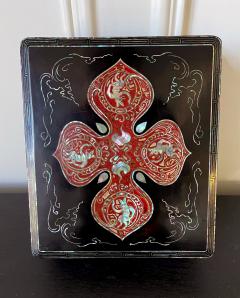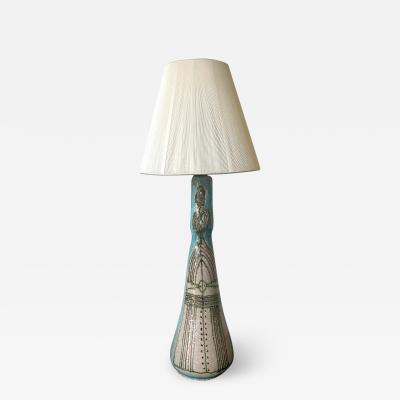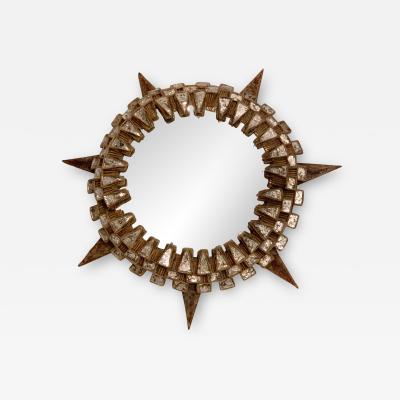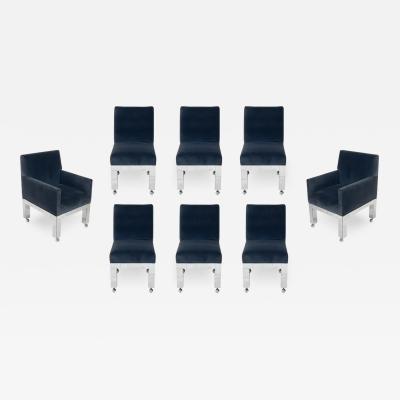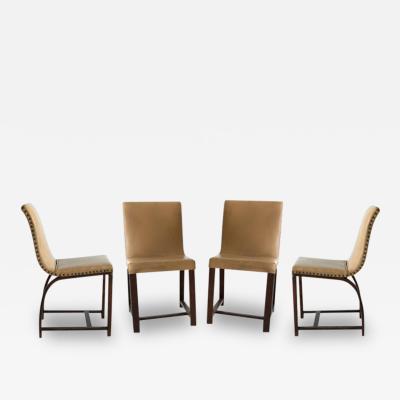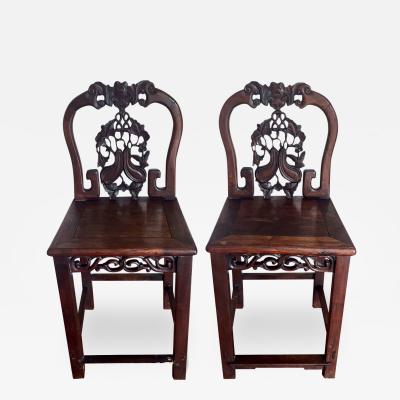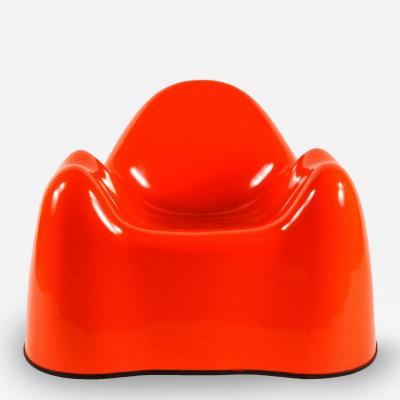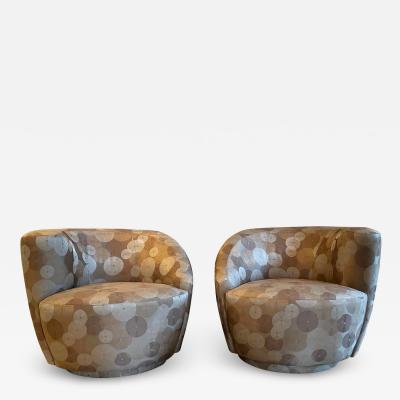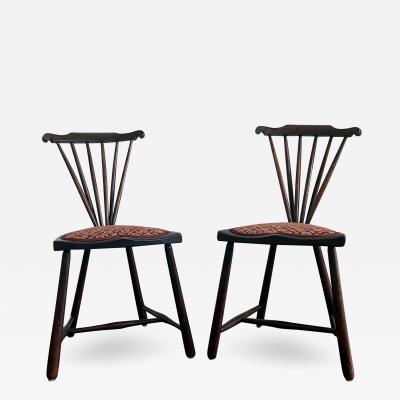Listings / Decorative Arts / Objects / Other
Unusual Japanese Lacquer Inkstone Box with MOP Inlays
-
Description
A Japanese black lacquer box with mother of pearl inlays circa early 20th century, end of Meiji period. It was likely to be used to store inkstone or other scholarly items. The piece displays several interesting characteristics that appear puzzling initially. First, the form is not typical Japanese, but more Chinese and Korean, with its scalloped base. Two, the decoration of MOP inlays also suggests a Korean and Chinese affiliation, especially with the linear borders and the scrolling cloud patters on the sides of the box. These two observations suggest that the box may be from Ryukyu Island instead of Japanese mainland. Third, strikingly in the center of the cover, a bold quarterly floral pattern outlined with MOP was filled with a striking mottled red lacquer using tsugaru nuri technique. Tsugaru nuri was a pure Japanese invention from Aomori prefecture, centralized in Hirosaki city, dated to Edo period. Fourth, the particularity of the decoration using four dancing foxes (kitsunes) also indicates a Japanese origin. Kitsunes spirits permeate in a wide contexts in Japanese folklores and they could represent both the good and the tricky natures of the animal. More importantly, kitsunes were often used as motifs in Japanese decorative art, from painting, prints to lacquerware (while it is less common to see them in Chinese and Korean art). These seemingly contradicting features point to a likelihood that the piece was made by an artist who created his unique style by combining the Ryukyu Island aesthetic with tsugaru nuri from Northern Japan and kitsunes motifs that were popular in Japanese art.
-
More Information
Origin: Japan Period: 1900-1919 Materials: lacquer wood Condition: Good. Wear consistent with age and use. Minor losses. Stable age cracks on the corners, small dings and bumps along the edges, contact wear on the base. Because of the color, none is conspicuous to compromise the beauty of this piece. All as shown. Creation Date: early 20th century Styles / Movements: Bespoke, Asian, Traditional Patterns: Animal/Insects, Asian/Oriental, Handmade Incollect Reference #: 437086 -
Dimensions
W. 10 in; H. 3.4 in; D. 11.5 in; W. 25.4 cm; H. 8.64 cm; D. 29.21 cm;
Message from Seller:
Tishu, based in Atlanta, GA, offers a diverse collection ranging from Neolithic art to 20th-century collectibles, with a focus on Mid-century design, Japanese and Korean art, Asian textiles, and Contemporary Aboriginal art. Driven by a passion for timeless beauty, the gallery is open by appointment only and offers works that span 5,000 years of history. Reach them at 305-400-0561 or tishu@tishugallery.com.


